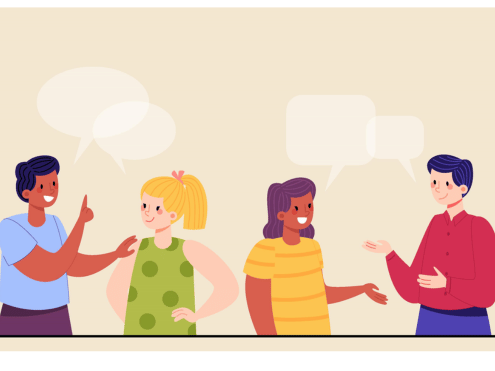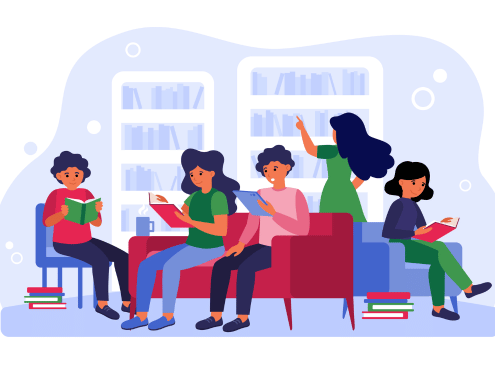This moment is more than a countdown. It is a rich opportunity—for students and teachers alike—to reflect, connect, and celebrate transformation. Whether we are guiding kindergarteners through their first stories, supporting teens writing final essays, or coaching adults, what we do in these final weeks matters. Deeply.
To foster these reflections effectively, it is always essential to provide not only auditory prompts but also visual scaffolding to model the kind of thinking we want students to engage in. This simple but powerful practice can help all learners, particularly younger or less confident ones, to articulate their insights meaningfully.
Let’s take the opportunity to end the year in a way that truly celebrates all that we have achieved together!
Creative Closures that Celebrate the Journey
Throughout the year, our students haven’t just absorbed content—they have lived it. They’ve made mistakes, had “aha” moments, collaborated and discovered new vocabulary, structures, ways to learn, speak and share.
In order to foster awareness and deepen their appreciation for their own learning process, we can invite students to create a Learning Timeline—a visual and interactive representation of the year. This timeline could take the form of:
- a poster wall,
- a digital or paper slideshow,
- a sticky note reflection gallery,
- or even a physical path along part of the classroom floor.
Photos, students’ work samples, drawings, key concepts learnt, speech bubbles reflections or quotes can all find a place. Whenever posible, let’s accept their creative suggestions to personalise the task further.
These activities can—and should—be adapted by age and level. Remember, we can encourage students to post not only academic milestones but also thoughts, feelings, or highlights: memorable moments shared, difficult situations overcome individually or as a group, favourite activities and any other meaningful memories they wish to add.
Each of these says: This mattered! You mattered!, since these aren’t just review tasks—they are celebrations of the learning process as a whole.
Metacognition: A Process for All Ages
This is a perfect time to guide students through structured metacognitive reflection— thus encouraging them to recognise their strengths, identify their challenges, and explore their learning strategies and emotions.
Vygotsky (1978) reminds us that learning is most powerful when mediated by a more knowledgeable other. But reflection is not reserved for the oldest or most advanced students. On the contrary, learners of every age can—and should—explore the "how" and "why" behind their learning since this practice promotes deeper understanding, self-awareness, and helps them become more independent, strategic learners.
Simple tools like sentence starters, ideally shared both visually and verbally, can help even the youngest learners express their thoughts. For example:
- “I’m proud of…”
- “I still want to learn…”
- “I found ___ hard, but I kept trying.”
For older students, journaling or guided discussions can prompt deeper insights. Prompts can include:
- How did I grow as a learner?
- What or who helped me when I felt stuck?
- What emotions came up while studying or communicating in another language?
- What can I do now that I couldn’t when the classes started?
This is metacognition—thinking about one’s own thinking—in action. It empowers students to regulate their learning, build autonomy, and become more strategic learners (Zohar & Barzilai, 2013).
Sometimes, using a Think-Pair-Share dynamic makes the experience even richer: first reflecting individually, then sharing with a partner, and finally discussing as a small group or whole class. This gradual approach can especially support introverted and weaker students and foster a higher level of class participation.
Emotional Intelligence: The Heart of Learning
As Goleman (1995) wrote, what truly matters for success, character, happiness, and lifelong achievement is a definite set of emotional skills—our Emotional Intelligence (EQ)—not just purely cognitive abilities.
No student excels in every area, no matter what their report card suggests. And even those who’ve achieved academic excellence may struggle with empathy, frustration or motivation. That’s why now, at the end of the year, reflecting on Emotional Intelligence is both powerful and necessary.
Prompts for emotional reflection might include:
- How do I handle feedback?
- What strategies do I use to deal with failure or frustration?
- What motivates me to keep learning?
As already suggested, providing both oral discussion and visual prompts (such as posters with these questions) helps set the emotional tone and allows students of all ages to find their way into these profound discussions.
By sharing our thoughts in a respectful, welcoming environment, we honour the vital and unique human side of learning.
Gratitude: Closing with Connection
Gratitude strengthens classroom bonds, helping to end the year not just with a sense of completion, but with appreciation and connection. It shifts the tone from simply ending to appreciating and giving thanks.
The following activities can help students reflect on and express their gratitude in meaningful ways:
- writing Thank-You Letters to classmates, relatives, teachers, themselves, or even the class mascot, if they have one,
- creating a Tree of Gratitude, where each student adds a "leaf" with a thank-you message,
- decorating a Memory Wall with quotes, inside jokes, photos, or drawings,
- using a Gratitude Jar, where students add notes of appreciation to be read aloud later. These notes can be anonymous or signed.
Additional ideas to express gratitude, mainly for older students, may include:
- holding a Gratitude Circle, where each student shares something they're thankful for,
- sharing a "Thank-you" speech or message in front of the class,
- offering small acts of kindness, such as writing notes or helping peers, to show appreciation.
Gratitude fosters joy and lets the memory of the school year be filled with meaning. It is greatly beneficial both at the individual and group level, as it enhances personal well-being and strengthens healthy social connections.
Teachers Reflecting Too: A Time to Look Back (and Ahead)
This isn’t just a season for student reflection. It’s a teacher’s moment, too. Throughout the year, we have explored new strategies, forged relationships, adapted to challenges, and nurtured not just academic achievement but emotional and social well-being.
As we near the end of the year, why not take a quiet moment to pause, breathe, and ponder these possible questions:
- When did I feel most energized?
- What am I most proud of?
- How effective was my work-life balance?
- What needs recalibration?
- What challenged me, and what did I learn from it?
- Which instances of Continuous Professional Development (CPD) taught me the most, and why?
- What do I want to continue, adapt, or explore differently next year?
In my own practice, I often turn to a simple T-chart to help me unpack complex experiences. Whether I’m weighing the pros and cons of a new strategy, evaluating a classroom decision, or just making sense of a tough personal experience, this visual tool helps me clarify my thinking.
|
What Went Well |
What Needs My Attention |
|
Strong rapport with students |
Needed more variety in assessments |
|
More student-led activities |
Want to better support quiet learners |
Reflection doesn’t need to be grand, it just needs to be honest and consistent. Taking time for intentional self-reflection allows us to pause, step back, recharge and acknowledge the growth we ourselves have undergone.
Let’s Not Just Finish—Let’s Flourish
As we wrap up the year, let us remember once again that teaching is not simply about covering the curriculum. It is about transformation. Growth. Human connection.
We are not merely preparing students for final tests; we are preparing them to be curious, reflective, empathetic, and courageous at school and in the world beyond the classroom.
In the words of Sir Ken Robinson (2006): "Teaching is not a delivery system. It’s a creative profession. One that builds confidence, awakens minds, and nurtures potential."
So, as this school year ends:
- Let’s not just finish the year.
- Let’s celebrate the journey.
- Let’s honour the growth.
- Let’s shape the memory of learning as something joyful, meaningful, and deeply human.
And, last but not least, we’d love to hear from you! If you’ve already planned ways to share reflections, insights, or ideas with your students as the year wraps up, share them in the comments. Let’s inspire each other and make these last moments of the school year even more meaningful!
References
Goleman, D. (1995). Emotional intelligence: Why it can matter more than IQ. Bantam Books.
Robinson, K. (2006, February). Do schools kill creativity? [Video]. TED Conferences. https://www.ted.com/talks/sir_ken_robinson_do_schools_kill_creativity
Robinson, K. (2015). Creative schools: The grassroots revolution that's transforming education. Viking.
Vygotsky, L. S. (1978). Mind in society: The development of higher psychological processes (M. Cole, V. John-Steiner, S. Scribner, & E. Souberman, Eds.). Harvard University Press.
Zohar, A., & Barzilai, S. (2013). A review of research on metacognition in science education: Current and future directions. Studies in Science Education, 49(2), 121–169. https://doi.org/10.1080/03057267.2013.847261









